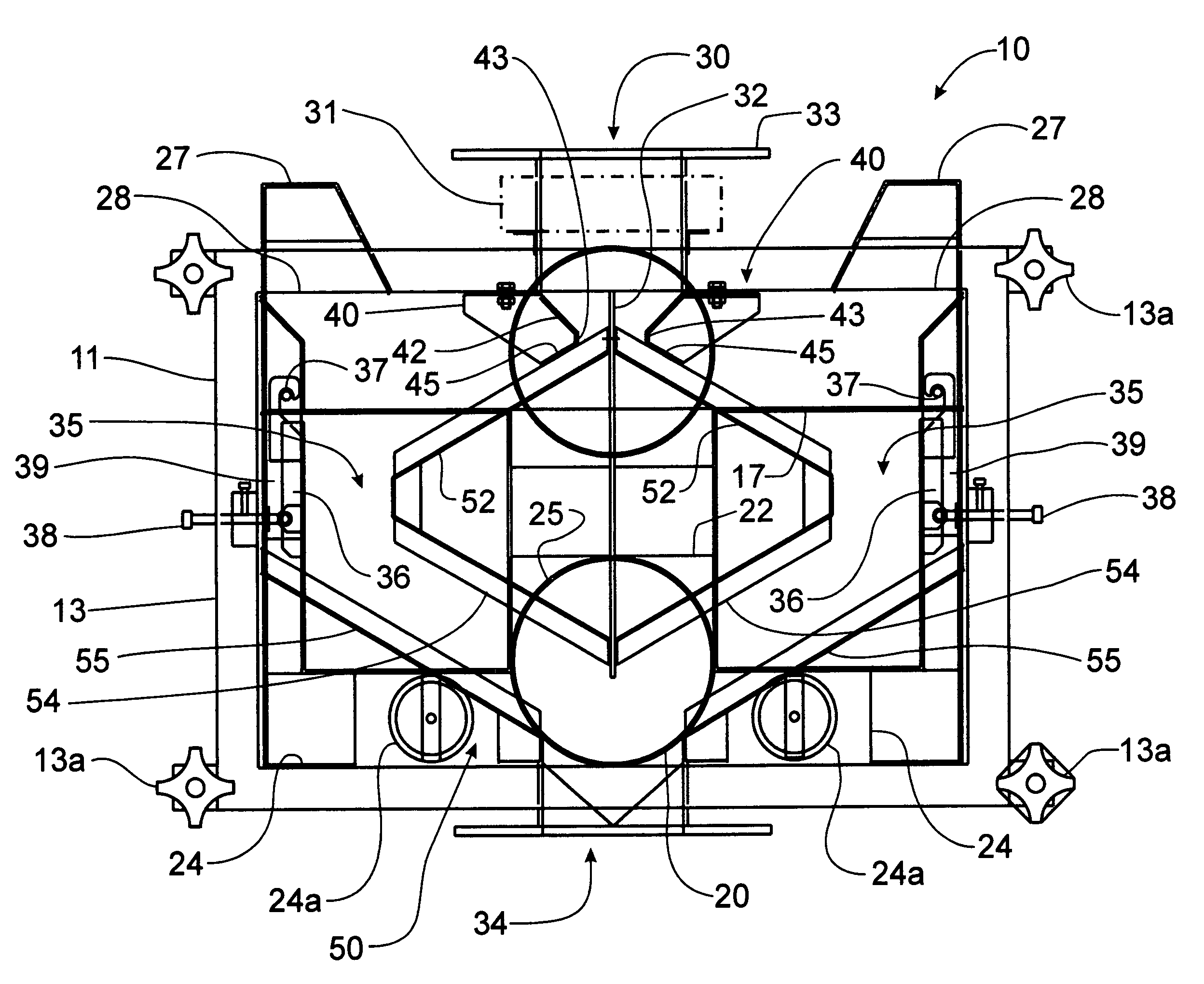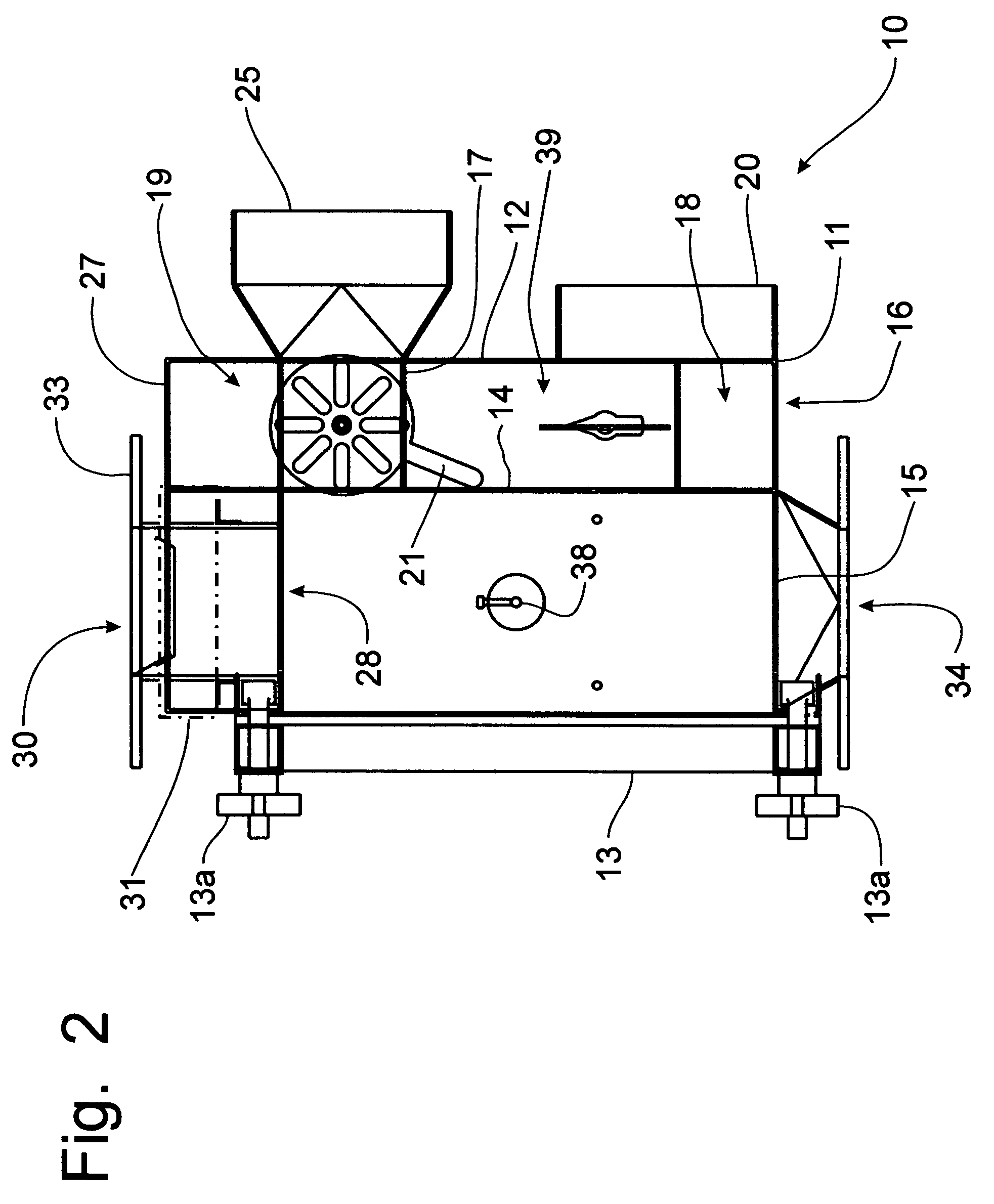Compact dedusting apparatus
a dedusting apparatus and compact technology, applied in the field of compact dedusting apparatus, can solve the problems of affecting the flow of materials, etc., and achieve the effect of improving the air flow characteristics
- Summary
- Abstract
- Description
- Claims
- Application Information
AI Technical Summary
Benefits of technology
Problems solved by technology
Method used
Image
Examples
Embodiment Construction
[0041]The dedusting apparatus is known in the art. A description of the structure and operation of a dedusting apparatus and a compact dedusting apparatus can be found in U.S. Pat. No. 5,035,331 and in U.S. Pat. No. 6,595,369, both of which were issued to Jerome I. Paulson, the contents of each of these patents being incorporated herein by reference. Typical particulate material to be cleaned by the dedusting apparatus 10 is plastic pellets that are to be passed into an injection molding machine to form plastic components. Examples of plastic particulate material that can be cleaned of contaminate material by the dedusting apparatus 10 are polyester, acrylic, high density polyethylene, polypropylene, nylon, polycarbonates, styrene, and low density polyethylene. Other types of particulate material that can be cleaned in the dedusting apparatus 10 include glass particles and grain.
[0042]Referring to FIGS. 1-9, the dedusting apparatus 10 is connected to a vertical portion of a fluent m...
PUM
 Login to View More
Login to View More Abstract
Description
Claims
Application Information
 Login to View More
Login to View More - R&D
- Intellectual Property
- Life Sciences
- Materials
- Tech Scout
- Unparalleled Data Quality
- Higher Quality Content
- 60% Fewer Hallucinations
Browse by: Latest US Patents, China's latest patents, Technical Efficacy Thesaurus, Application Domain, Technology Topic, Popular Technical Reports.
© 2025 PatSnap. All rights reserved.Legal|Privacy policy|Modern Slavery Act Transparency Statement|Sitemap|About US| Contact US: help@patsnap.com



